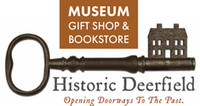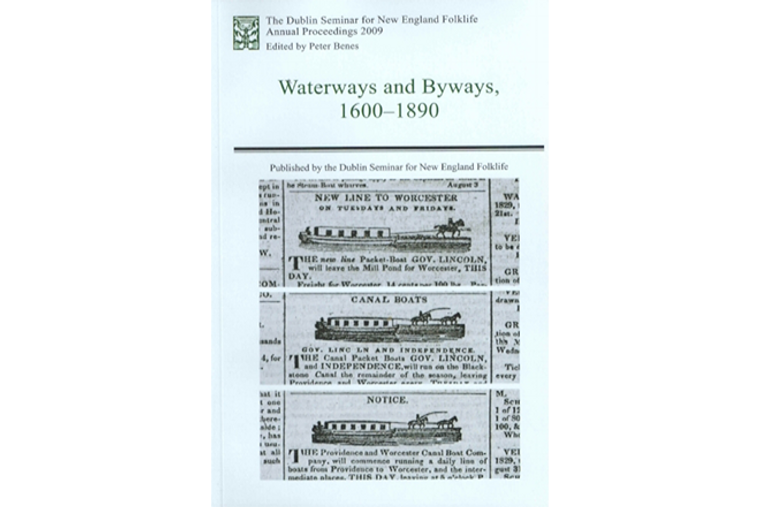
Waterways and Byways, 1600 - 1890
This publication is a collection of papers presented at the Dublin Seminar of New England Folklife conference in June of 2009. The essays in this volume demonstrate the landscape of the trail or the waterway was a discrete, if extended environment. The route itself functioned as a “contact zone,” a site of understanding as well as conflict for Native American and Europeans, mill owners and canal builders, buyers and traders, and boat crews and outlaws, whose exchanges were prone to happen at various locations along the way. The essays reveal how improvements in transportation could accelerate change and lead to different rates of change in many parts of the region. They highlight the existence of conflict side by side with stability throughout the landscape.
The following is a list of the title and author of each paper: An Indian Trail over Hoosac Mountain by Clifford J. Schexayder, Inclined to Succeed: The South Hadley Canal by Kenneth L. Williamson, Memphremagog or Bust: The Connecticut River Company, the Farmington Canal, and Their Battle for the Upper Connecticut River by Richard DeLuca, From The Sea to the Commonwealth’s Heart: The Short-Lived Blackstone Canal by Tom Kelleher, Manufacturing Eden: The Rivers and Canals of Lowell, 1820 – 1870 by Jane Weiss, Lake Champlain: Ice Highway/Ice Byway by Susan M. Ouellette, Maine’s Myriad Waterways and the Coastal Granite Manufacturing Industry, 1815 – 1890 by Aaron Paul, Timekeeping and Timekeepers on New England Byways by Bob Frishman, Pirates, Bandits, and Runagates: Roving Outlaws on Early American Waterways by James I. Deutsch, Dr. Anthony Yeldall: A Philadelphia Pharmacist Navigates the American Northeast by Peter Benes, “Like an Avalanche”: Traveling Circuses on Roads, Rivers, and Rails by Richard W. Flint.





